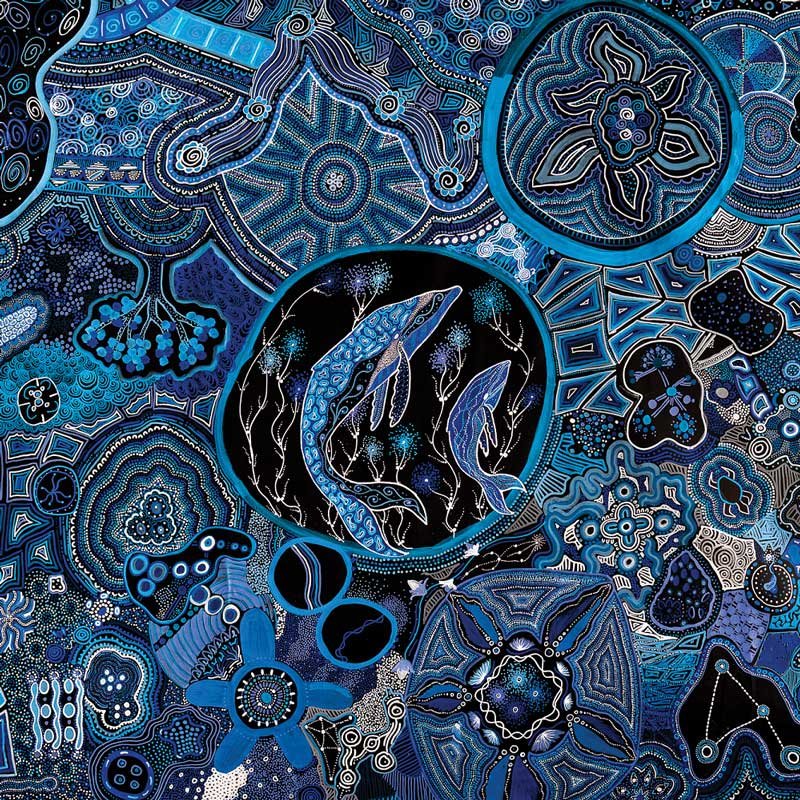Six Noongar Seasons with Dandjoo Darbalung
Our Indigenous access program Dandjoo Darbalung has spent several years putting together a series of large canvas artworks that represent the six Noongar seasons. These pieces are the work of our Indigenous residents, with contributions from the wider St Catherine’s community and schools that have participated in the Dandjoo Darbalung outreach program.
If you would like further information on our cultural immersion programs, please get in touch with our Indigenous Program Coordinator Maxine Brahim
Birak: December – January
The first summer. Noongar people would practice burning to force native animals into the open, making hunting easier.
Bunuru: February – March
The second summer. The hottest time of the year, with little or no rainfall. Noongar people would move closer to the estuaries for fishing.
Djeran: April – May
It’s all about good tucker as the cooler weather sets in. Noongar people would continue fishing along the coast. Bulbs, seeds, Jam gum and berries were plentiful and were collected.
Makuru: June - July
The first rains. Noongar people would move inland once the rains had replenished the water systems and prepare for Djilba, the following season, which has heavy rains and cold nights. Noongar people would stock up on free tools and medicine.
Djilba: August – September
The second part of winter and the wettest and coldest time of the year, with clear cold nights. Food is abundant in this season, and it is a perfect time to stock up on good tucker like native potatoes.
Kambarang: October- November
The wildflower season, when the days become longer, warmer and drier. The baby birds are born, reptiles surface from hibernation and wildflowers bloom. Noongar people would move closer to the coast where the frogs, turtles and freshwater crayfish were.







